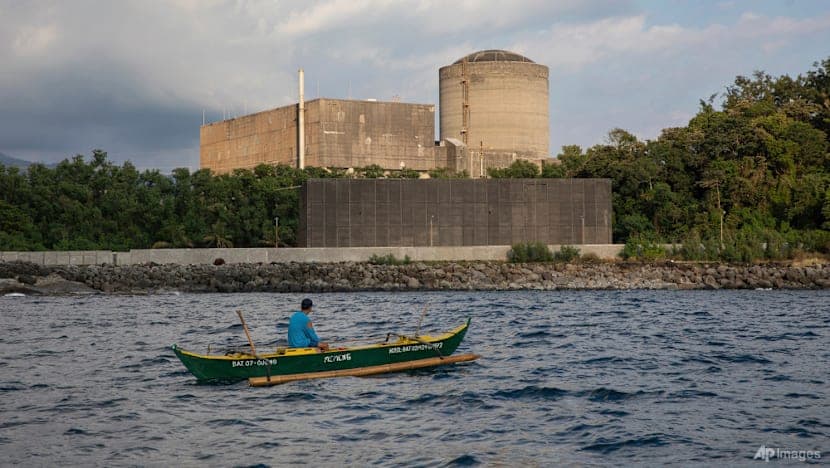Rising Nuclear Interest, Limited Clarity
Singapore has sounded a note of caution: despite a wave of announcements across Southeast Asia, it cannot confirm the maturity of neighboring nuclear plans. Minister in charge of Energy and Science and Technology Tan See Leng told Parliament that officials are working with international partners, including the International Atomic Energy Agency, to triangulate sparse public data. Governments in the region have flagged nuclear power for the 2030s, yet firm technology choices and schedules are still scarce.
- Rising Nuclear Interest, Limited Clarity
- What Singapore Said and Why It Matters
- Where ASEAN Countries Stand Now
- The Technologies on the Table
- Safety, Waste, and Public Trust
- The Financing Challenge and the Role of Big Investors
- Regional Cooperation and the ASEAN Power Grid
- How Singapore Could Proceed
- What to Know
The stakes are growing. ASEAN electricity demand is set to triple by 2050 as economies expand and digital infrastructure scales up. Coal and gas supplied about two thirds of the region’s power in 2022, while renewables provided roughly one third. Many governments now aim to cut emissions and strengthen energy security. That combination is pushing nuclear power into policy conversations, supported by regional initiatives under the ASEAN Plan of Action on Energy Cooperation.
Timelines remain ambitious. Recent statements point to targets such as nuclear generation in the Philippines around 2032, commissioning of Indonesia’s first plant in the early to mid 2030s, inclusion of nuclear in Malaysia’s mix as early as 2031, and the return of nuclear planning in Vietnam toward the 2030 to 2035 window. Without detailed project disclosures, however, investors and neighbors have limited visibility on what will be built, where, and when.
What Singapore Said and Why It Matters
Responding to questions from lawmakers, Dr Tan said the government cannot verify the current state of planning among neighbors. The pool of public information is thin. Singapore is comparing available data with inputs from international agencies to build a clearer picture and monitor risks. He added that some countries have floated potential sites, including locations in remote parts of Indonesia, yet definitive schedules have not been published.
Singapore has not decided to deploy nuclear power. It is studying the option as part of a low carbon strategy. The Energy Market Authority is assessing advanced nuclear technologies and the National Environment Agency is focusing on safety and safeguards. A technical study by British engineering firm Mott MacDonald is reviewing water cooled small modular reactors (SMRs) and a range of Generation IV designs. Dr Tan indicated that if neighbors choose advanced designs, Singapore’s readiness would likely be on par with theirs.
Where ASEAN Countries Stand Now
Progress varies widely across the region. Several countries have research reactors for medicine, materials science, and training. These include Malaysia’s Triga Puspati reactor, Indonesia’s facilities at Serpong, Bandung and Yogyakarta, and Vietnam’s Da Lat reactor. Building a power plant is a longer journey. The IAEA Milestones Approach breaks the path into five stages, from early consideration to expansion, and requires governments to set up a Nuclear Energy Programme Implementing Organization to address nineteen infrastructure topics. The consideration stage often takes two to three years, the preparation stage three to five years, and the implementation stage seven to eight years.
Indonesia
Indonesia has discussed its first nuclear power plant in the early to mid 2030s. One plan outlines a first 500 megawatt program split across two plants, with options that include small modular reactors and floating plants suited to an island geography. The national utility has explored cooperation with partners from the United States and Japan. Independent developers have proposed molten salt designs and floating units, with one developer targeting operations around 2032. Indonesia also reports a growing list of potential sites and has decades of experience operating research reactors. The country still relies on fossil fuels for most electricity, and a nuclear rollout would aim to add firm low carbon supply as demand rises.
Philippines
The Philippines has moved to put policies in place for a first plant and has set an initial target for nuclear power in the 2032 timeframe. A long range plan seeks several gigawatts of capacity by mid century. Lawmakers have advanced a framework for an independent regulator and officials have engaged suppliers of small modular reactors, microreactors, and floating units that could serve remote areas. Manila is also weighing the possible reuse of the mothballed Bataan facility. Gas supply risks add urgency, since production from the Malampaya field is in decline. The Department of Energy has outlined measures to give early projects clear market access and pricing rules to unlock financing.
Vietnam
Vietnam paused an earlier program, then reopened the discussion as it seeks to replace coal in the 2030s. Current planning points to the Ninh Thuan 1 and 2 sites between 2030 and 2035 with several thousand megawatts of capacity, followed by an expansion toward 2050. Officials are preparing for an Integrated Nuclear Infrastructure Review in 2026 and are engaging with experienced partners from Asia, Europe, and North America. The goal is to strengthen institutions and workforce before committing to construction.
Malaysia
Malaysia is studying nuclear as it aims for net zero by 2050 and seeks reliable power to serve industry and a growing data center sector. Policymakers have discussed including nuclear in the mix as early as 2031. Work now focuses on pre feasibility assessments, legal frameworks, and public engagement. The government is preparing for international benchmarking and building oversight capacity. Supporters cite the need for steady low carbon power and the potential for small modular reactors to reduce upfront risk. Critics point to waste management, safety, and cost, arguing for a measured approach with strong transparency.
Thailand
Thailand is exploring small modular reactors for the late 2030s. Energy plans reference around 600 megawatts from these units as part of a broader shift toward carbon neutrality. Bangkok has joined international cooperation programs and is building regulatory capacity while keeping timelines flexible.
Singapore and others
Singapore is studying small modular reactors as an option that could supply roughly ten percent of its electricity by 2050, subject to safety and cost. Cambodia and Myanmar have taken initial steps only. Across ASEAN, ministers have discussed a regional readiness framework to share best practices and align on safeguards.
The Technologies on the Table
Two paths dominate discussions. Large conventional water cooled reactors deliver big blocks of steady power and have long operating histories in many countries. Advanced designs seek equal or better safety with more flexibility and different fuel cycles. Both tracks can support climate goals if projects stay on budget and schedule.
Conventional reactors versus advanced designs
Conventional reactors use pressurized or boiling water systems with redundant safety layers. They are proven but complex to build. Advanced designs include Generation IV concepts such as high temperature gas cooled, molten salt, sodium cooled, and lead cooled systems. Many add passive safety features that rely on natural forces like gravity and convection rather than pumps. Some aim for higher temperatures that can support industrial heat and hydrogen production, in addition to electricity.
Small modular reactors
Small modular reactors typically range from 50 to 300 megawatts per unit. They are designed for factory fabrication, then shipped and assembled on site. The promise is shorter build times, lower financing needs per unit, and easier integration with medium sized grids. Multiple modules can be added in stages as demand grows. These designs still face first of a kind risk. One program in the United States saw projected power prices rise from about 55 dollars to 89 dollars per megawatt hour before cancellation, showing how early cost estimates can shift. Over time, learning by doing and standardization could bring costs down.
Floating and non power applications
Floating plants mount reactors on purpose built vessels or barges moored near the coast. They can power islands, ports, and industrial zones, and can move for refueling or maintenance. Developers argue this reduces land constraints and can speed deployment. Regulators will still need to vet maritime safety, emergency planning, and environmental protection. Advanced reactors also open non power uses such as desalination and process heat, which can improve project economics.
Safety, Waste, and Public Trust
Safety and waste shape public confidence. ASEAN sits in a seismically active zone. That does not rule out nuclear, but it raises the bar for site selection and engineering. Designs must meet strict seismic standards and include robust emergency planning. Newer reactors layer passive systems and simpler layouts to reduce the chance of severe accidents.
Long term waste management is another challenge. Most countries use a stepwise approach. Spent fuel cools in pools, then moves to dry casks on site for decades. Eventually it is consolidated in secure facilities with strong safeguards. Some suppliers offer take back services and recycling, which can reduce local burdens. Governments still need clear laws, funding, and public oversight for each step.
Workforce is a practical concern. Power plant operators, regulators, and emergency responders need specialized skills. Training takes time. Estimates in the region show gaps in the thousands for full scale programs. Partnerships with experienced operators, scholarship schemes, and regional training centers can build capacity.
An energy economist at the IAEA, Brianna Lazerwitz, has warned that investors view nuclear projects differently from other large assets. She pointed to a mix of development risk, long schedules, and complex liability rules.
Nuclear projects have unique risks for investors compared to other large infrastructure projects.
The Financing Challenge and the Role of Big Investors
Financing is the deciding factor. Large reactors require many billions of dollars, long loan tenors, and stable policy. Even smaller units need confidence in construction costs and power sales. One high profile small modular reactor effort in the United States saw its expected power price rise from about 55 dollars to 89 dollars per megawatt hour before cancellation, underlining cost uncertainty when projects are first of a kind.
Experts in the region are urging a package of solutions. Ideas include involving multilateral development banks early, breaking projects into phases, securing offtake from large electricity users like data centers and industrial parks, and crafting clear, independent regulation to lower perceived risk. Investor appetite is growing as more governments back nuclear within net zero strategies, and a group of global financiers has called for tripling nuclear capacity by 2050.
ASEAN energy ministers are also building regional tools. Officials recently announced an ASEAN Nuclear Energy Readiness Framework to help countries benchmark progress and prepare institutions. That sits alongside new financing initiatives for cross border grids, which can support reliable nuclear integration by moving power to where it is needed.
Regional Cooperation and the ASEAN Power Grid
ASEAN’s power integration drive has gathered pace. The Laos Thailand Malaysia Singapore Power Integration Project has proven that cross border trade can work in practice, supplying electricity from hydropower in Laos through Thailand and Malaysia to Singapore. Ministers say the region has completed nine of the eighteen planned interconnections under the ASEAN Power Grid, delivering more than ten gigawatts of capacity, with a goal of twenty five gigawatts by 2030.
Malaysia’s Deputy Prime Minister Fadillah Yusof said the Laos Thailand Malaysia Singapore project provides a viable business model that can be scaled across the bloc. He added that shared grids improve security by allowing neighbors to support each other during peak demand or low generation.
This business model can be scaled to all ASEAN nations within the ASEAN Power Grid framework.
Grid cooperation matters for nuclear. Reliable baseload output can anchor power systems, but plants also benefit from larger balancing areas. Cross border links help during outages or maintenance and allow flexible dispatch alongside growing shares of solar and wind.
How Singapore Could Proceed
Singapore’s options reflect its constraints. Land is scarce, wind resources are limited, and even maximum rooftop solar would cover only a fraction of demand. Import agreements help, yet long term security points to a need for firm low carbon power at home or near the border. Advanced small modular reactors are a candidate because of their smaller footprint, passive safety features, and potential to match the island’s grid.
Officials are building capabilities, engaging the public, and keeping in close contact with international partners. The 2012 pre feasibility study concluded that older plants were unsuitable for a dense city state. The picture has changed with new designs. Singapore’s current reviews aim to answer detailed questions on siting, emergency planning, waste, and insurance, as well as on the role of imports and the ASEAN Power Grid.
During a recent visit, Rafael Mariano Grossi, Director General of the IAEA, said Singapore has the technical depth and institutions to move quickly once it makes a choice.
Singapore could be the most perfect example of a country that needs nuclear energy.
A decision will hinge on safety, reliability, affordability, and environmental performance in the local context. The government says public engagement will continue, with regular updates on the benefits and risks of advanced reactors.
What to Know
- Singapore says it cannot verify the maturity of neighbors’ nuclear plans and is comparing limited public data with inputs from the IAEA.
- ASEAN electricity demand is projected to triple by 2050. Coal and gas still supply about two thirds of power.
- Regional targets point to first nuclear power in the Philippines around 2032, Indonesia in the early to mid 2030s, and Vietnam between 2030 and 2035. Malaysia is weighing inclusion as early as 2031.
- Indonesia is studying small modular and floating options and has discussed many potential sites. The Philippines is building a regulator and policy framework and seeks several gigawatts by mid century.
- Vietnam has revived planning for the Ninh Thuan sites and will seek an IAEA infrastructure review in 2026.
- Small modular reactors promise flexible deployment but carry first of a kind cost and licensing risk.
- Safety, waste, and workforce needs remain central to public trust and regulatory credibility.
- Financing is complex. Ideas include phased projects, bank support, and offtake from large electricity users.
- ASEAN is advancing power grid integration. The Laos Thailand Malaysia Singapore project is a model for cross border trade.
- Singapore is seriously studying advanced nuclear designs, with capability building and public engagement underway.




